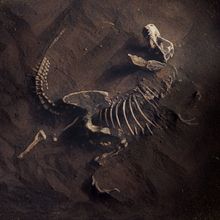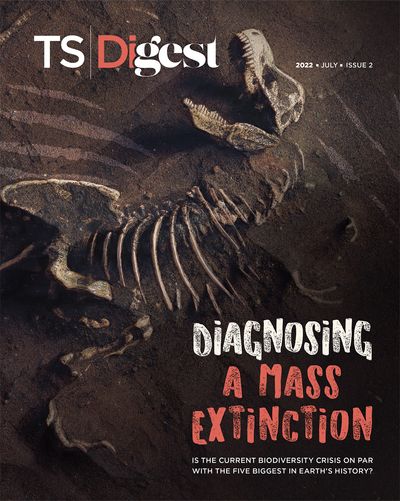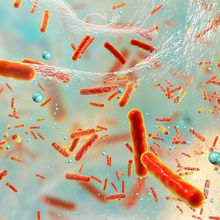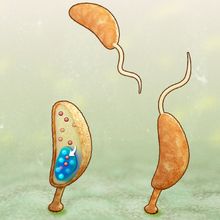Login
SubscribeJuly 2022, Issue 2 Table of Contents
Feature

Are We in the Midst of a Sixth Mass Extinction?
Katarina Zimmer | Jul 18, 2022 | 10+ min read
Today’s extinction rates are sky-high. But scientists debate if that’s sufficient evidence to conclude that Earth is undergoing a mass extinction event—or whether that’s even a helpful designation.
The Literature
How a Bacterium Manages to Reproduce During Famine
How a Bacterium Manages to Reproduce During Famine
When Caulobacter crescentus finds itself in a nutrient-poor environment, it clusters an enzyme necessary for cell division thanks to a physical phenomenon known as phase separation so it can make better use of dwindling fuel.
Infographics
Infographic: Nutrient Scarcity Drives Phase Separation in Bacteria
Infographic: Nutrient Scarcity Drives Phase Separation in Bacteria
When the bacterium Caulobacter crescentus runs low on fuel, it can still replicate by clustering its remaining ATP around the cell division enzyme DivJ.
Infographic: A Look at the Big Five Mass Extinctions
Infographic: A Look at the Big Five Mass Extinctions
Extinction is a natural part of life on Earth. But occasionally, extinction rates have surged far beyond usual levels, driving mass extinction events that have reshaped the trajectory of life.
Freeze Frame
Caught on Camera
Caught on Camera
See some of the coolest images recently featured by The Scientist
Scientist to Watch
Colin Carlson Works to Predict and Prevent Viral Spillover
Colin Carlson Works to Predict and Prevent Viral Spillover
The Georgetown University biologist studies how climate change contributes to the emergence of new zoonotic threats.
Careers
What If Scientists Shared Their Reagents for Free?
What If Scientists Shared Their Reagents for Free?
Some researchers have decided to provide their products without financial compensation or expectations of authorship on resulting papers, prompting a flurry of new work.
Reading Frames
Opinion: Why We Fall for Fad Diets
Opinion: Why We Fall for Fad Diets
Human beings are susceptible to the latest nutritional trends, regardless of their actual biological value.







